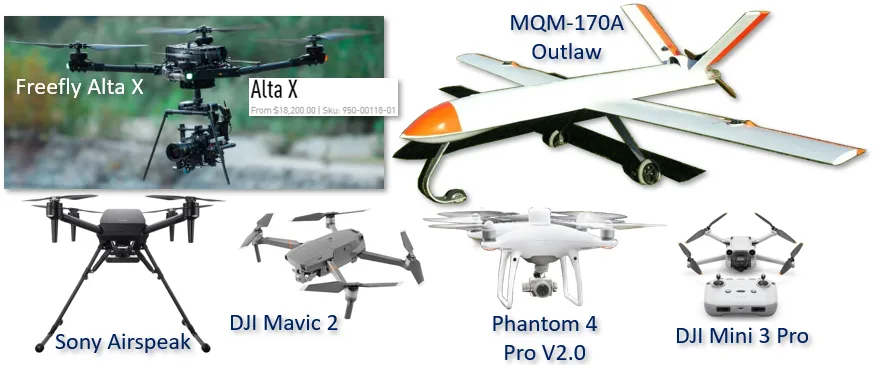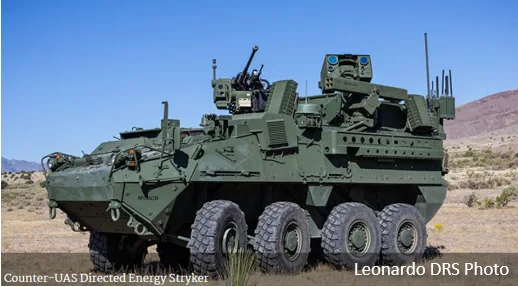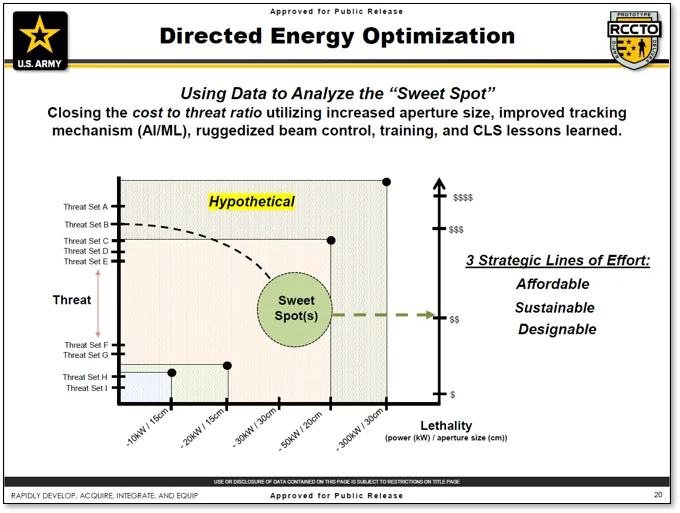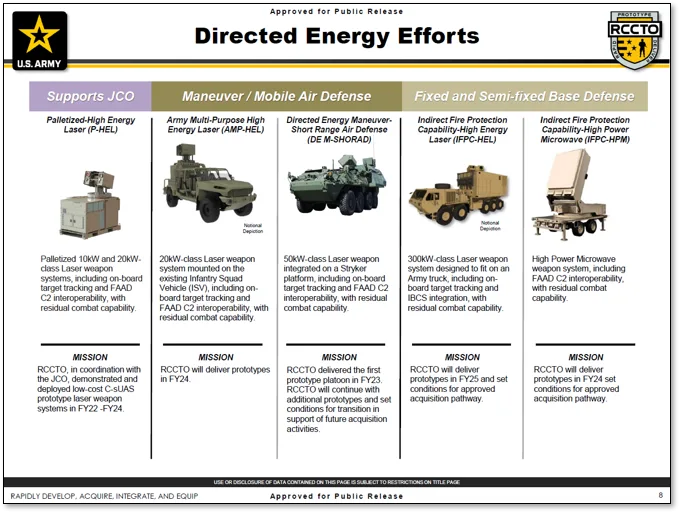Your Laser Testing Costs Too Much
SemQuest – Lower Cost Testing with Higher Data Output
By Caleb Hoover
How to Test Your Laser at a Much Lower Long Run Cost
You’ve done it! You’ve picked up target drones on radar, you’ve tracked them to within your High Energy Laser system’s effective range, and then you’ve shot those target drones out of the sky!
So, how much did those target drones cost?
Well, here’s a notional example of some assorted drones that could be used in evaluating a High Energy Laser weapon system:


BlueHalo’s Locust Laser Weapon System (LWS) is getting a lot of buzz right now with everyone from Leonardo DRS, Janes, and National Defense Magazine publishing articles on this successful new system. Equipped with a 26-kilowatt power level the following is possible according BlueHalo.com:
Non-kinetic effectors include BlueHalo’s LOCUST LWS, which is stored inside the Stryker and deployed when a threat is detected. The 26-kilowatt LWS combines precision optical and laser hardware with advanced software and processing to enable and enhance the directed energy “kill chain”. It tracks, identifies, and defeats Group 1-3 UAS and other threats. In addition to the LOCUST LWS, the Stryker employs BlueHalo’s Titan C-UAS™ and Titan-SV non-kinetic technologies, delivering comprehensive 360° surveillance and threat detection and mitigation of Group 1 and 2 drone threats.

Finding engagement ranges in most laser news articles is difficult, but sometimes this information becomes available. In an October 11th, 2024 article, Boeing reported that Boeing compact lasers down Group 3 drones for the first time. This is an impressive accomplishment given that this larger category of drones can weigh up to 1,320 lbs. This is about 180 lbs lighter than the classic Mini Coopers of the 1960s and 70s which weighed 1,500 lbs.
This is a particularly impressive achievement given the CLWS power is stated as just 5 kW.
The closing portion of the article declares that Boeings Compact Laser Weapon System (CLWS) has now defeated nearly 500 drones ranging from smaller drones in swarms to the larger Group 3 types. The effective engagement range of the CLWS is from 650 feet (200 meters) to 1.6 miles (2.5 kilometers).
While this is certainly impressive, the US Army has set a goal for future Laser Weapon Systems to be able to do the following for Group 3 UAS for nominal engagements:
•Nominal radar handoff (State vector, Covariance, Latency)
•Track Target – 8 km (Above and Below the Horizon (ATH and BTH))
•Identify Target – 6.5 km (Operator in the loop, 60-second ID time)
•Defeat Target – 4-5 km
Even with the impressive achievement of the CLWS recently, its effective range is just over half the minimum defeat of a Group 3 target range based on the needs determined by the US Army.
The Army sets out these requirements along with discussing the “Sweet Spot(s)” that laser technology of today could feasibly leverage toward manufacturing effective Group 3 UAS killers able to defend friendly forces.

The Sweet Spot(s) for these systems are expected to fall between 25 to 50 kW in power. The expectation is that asking for lower power laser systems will also mean they can be produced at a lower cost than higher power 300 kW systems envisioned as a base defense solution for example.

As industry works to achieve these objectives, will they opt to use reusable targets to help drive down overall target cost while adding more data and perspective into their analysis of these developmental system’s performance?
Hopefully.
References
Blue Halo. (2024, October 14). Press Release: Leonardo DRS and BlueHalo Successfully Demonstrate New Counter-UAS Directed Energy Stryker, Shooting Down Drones in Live-Fire Engagement. Retrieved from Blue Halo: https://bluehalo.com/leonardo-drs-and-bluehalo-successfully-demonstrate-new-counter-uas-directed-energy-stryker-shooting-down-drones-in-live-fire-engagement/
Boeing. (2024, October 11). Boeing compact lasers down Group 3 drones for first time. Retrieved from Boeing: https://www.boeing.com/features/2024/10/boeing-compact-lasers-down-group-3-drones-for-first-time
Leonardo DRS. (2024, October 14). Leonardo DRS and BlueHalo Successfully Demonstrate New Counter-UAS Directed Energy Stryker, Shooting Down Drones in Live-Fire Engagement. Retrieved from Leonardo DRS: https://www.leonardodrs.com/news/press-releases/leonardo-drs-and-bluehalo-successfully-demonstrate-new-counter-uas-directed-energy-stryker-shooting-down-drones-in-live-fire-engagement/
Park, A. (2024, October 14). AUSA NEWS: Leonardo Integrates Directed Energy Counter-Drone Weapon on Stryker. Retrieved from National Defense: https://www.nationaldefensemagazine.org/articles/2024/10/14/leonardo-blue-halo-successfully-test-new-counter-uas-directed-energy-stryker
Roaten, M. (2024, October 14). AUSA 2024: US RCCTO exploring new directed energy C-UAS vehicle. Retrieved from Janes.com: https://www.janes.com/osint-insights/defence-news/defence/ausa-2024-us-rccto-exploring-new-directed-energy-c-uas-vehicle
